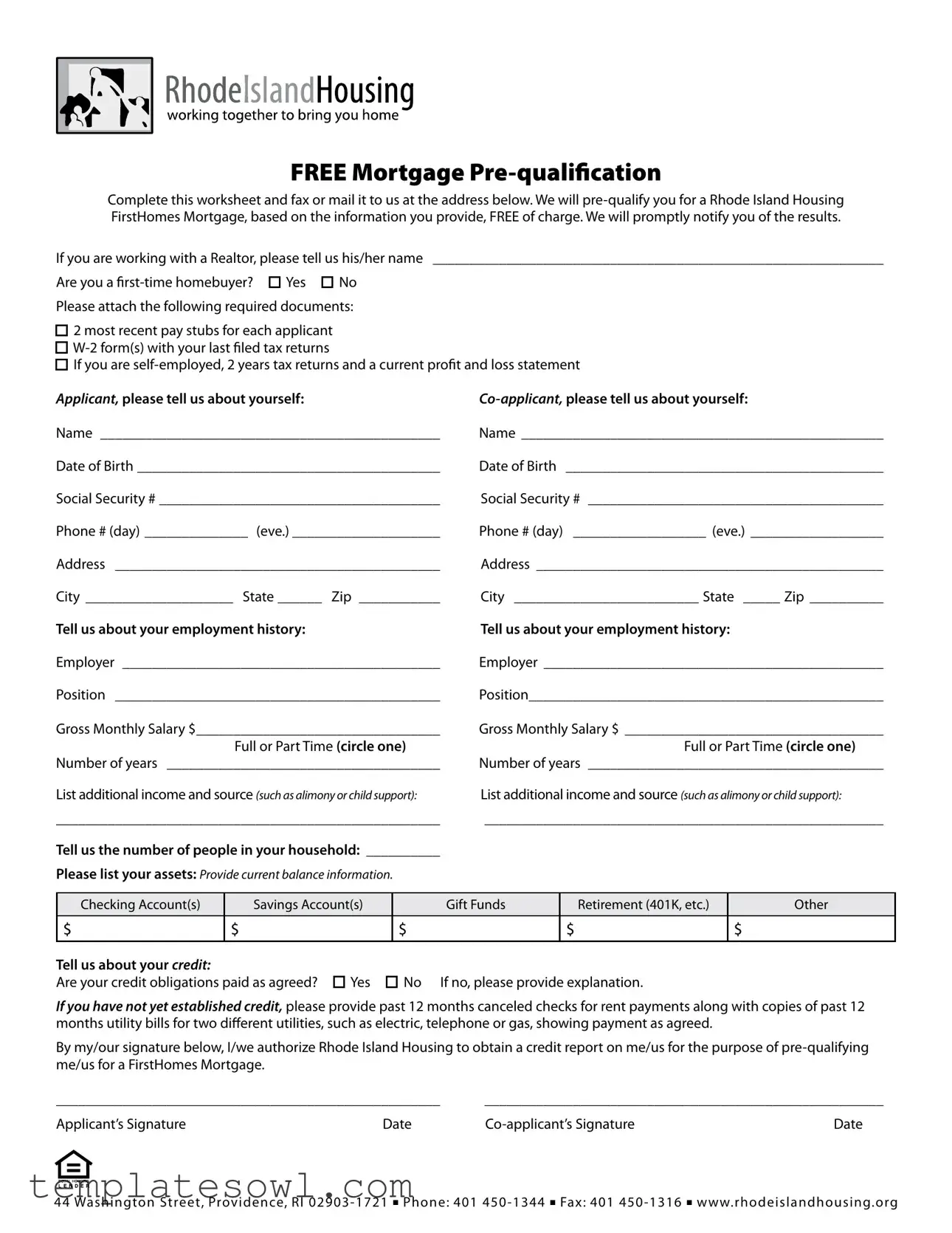What is the purpose of the Mortgage Prequalification Worksheet?
The Mortgage Prequalification Worksheet is designed to help potential homebuyers assess their eligibility for a Rhode Island Housing FirstHomes Mortgage. By completing this form, individuals can provide essential personal and financial information, allowing the institution to evaluate their suitability for prequalification without any costs involved. Applicants will receive a prompt notification regarding the results, helping them understand their next steps in the home-buying process.
What information do I need to provide on the worksheet?
The worksheet requires several key pieces of information. You'll need to provide details about yourself and any co-applicant, including names, dates of birth, and social security numbers. Employment history and gross monthly salary for both applicants are crucial for evaluating financial stability. Additionally, listing any extra income or assets, such as bank accounts or retirement funds, will give a clearer picture of your financial situation. Finally, you’ll need to address credit obligations and provide documentation about your credit history if necessary.
Are there any documents I need to attach with the worksheet?
Yes, applicants must attach several required documents to streamline the prequalification process. Two most recent pay stubs for each applicant, W-2 forms for the last filed tax returns, and if applicable, two years of tax returns along with a current profit and loss statement for self-employed individuals. These documents provide a foundation for understanding your financial background, which is crucial for assessing your eligibility for the mortgage.
How will I be notified of my prequalification results?
You will be informed of your prequalification results promptly after the mortgage provider reviews your worksheet and attached documents. Communication can occur via phone, mail, or email, depending on the contact information you provide on the form. It’s essential to ensure that the contact details are clear and current to facilitate smooth communication.
What if I am a first-time homebuyer?
If you are a first-time homebuyer, you should indicate this on the worksheet. Being a first-time buyer may affect the mortgage options and programs available to you. Rhode Island Housing often has specific initiatives and assistance for first-time homebuyers, so it's critical to share this information. Doing so could provide additional resources to support your homeownership journey!



 2 most recent pay stubs for each applicant
2 most recent pay stubs for each applicant


 If you are
If you are